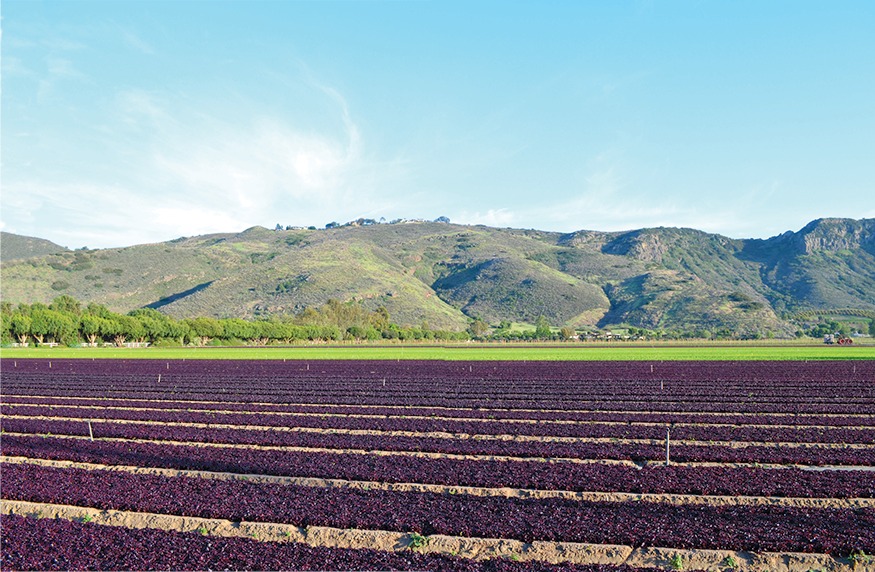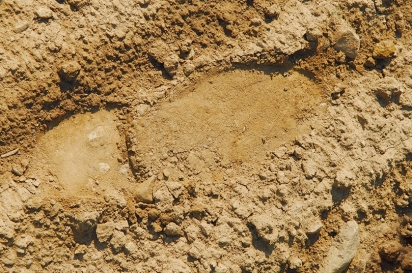The Real Dirt On Ventura County
Agriculture is born of the soil. In an area with a benevolent climate like Ventura County, it is understandable that we credit our weather for the bounty of our fields and orchards. That may be warranted, but it would not happen without the fertile land beneath our feet. Given our remarkable productivity and crop diversity, it would be tempting to assume that Ventura County must have great soil.
Tempting, but wrong.
Even a diehard VC farming enthusiast like me will concede that our soils are not great. A gardener would want to see more organic matter. A soil biologist would desire more microbial activity. A chemist might want a lower pH. But despite it all, our soils are varied and adaptable to a wide range of crops. Rather than perfect, our soils are useful. Farmers are pragmatists, and that is good enough for them.
I’m fond of observing that our county’s agriculture is dynamic, but our soils are constant. A soil survey published in 1970 by the USDA’s Soil Conservation Service (now called the Natural Resource Conservation Service) is a favorite resource of mine.
Much of its information is now more easily accessible online, but the musty maps and charts contain a wealth of information. (I’m not sure where my copy came from—it has always been on the shelf. If we got it when it was released, it would have been while my grandfather was still running things. It probably passed through the hands of the UC Cooperative Extension somehow, since the UC cooperated in the study.)
The survey identifies dozens of unique soils within Ventura County, which can be broken down into three major categories, each with its own characteristics. Over the years, each has evolved a mix of crops and its own culture of farming. Our soils have dictated not only what we grow, but also how farmers do business.
The broad alluvial plains around Camarillo and Oxnard are the dominant agricultural soils in the county. The plains are composed of soils that are wonderful for annual crops and allow for large, regularly shaped fields. Over the centuries, they have been home to barley, sugar beets, lima beans and, most recently, strawberries.
The soil is easily workable, with few rocks and stones. It has enough sand in the mix to allow good drainage, yet enough clay to preserve moisture for annual crops. The topsoil on the plain is also incredibly deep—more than 30 feet at some points. Even before the advent of irrigation, this land was highly productive and helped to establish the export-oriented agricultural industry that continues to define Ventura County to this day. Following the dictates of the soil, farms on the plains tend to be relatively large and focused on annual crops like strawberries or a mix of vegetables that can shift season to season.
Moving away from the plains and riverbanks are rockier soils not as flat as the plains. Termed “terraces” by soil scientists, they are poor ground for row crops but suitable to permanent crops, especially orchards. Walnuts were once a major crop in our river valleys, but they were replaced with citrus, avocados and now, in some areas, raspberries. The sandy, rocky soil is hard to work and irregularly shaped parcels following the terrain are hard to plant and harvest, but they have proven highly productive.
I know the ground well, as my place between Santa Paula and Fillmore has rocks that range in size from basketballs to Buicks. These soils have excellent porosity, the space within the soil that allows water and oxygen to penetrate and roots to grow. Avocados, in particular, are very happy to have well-drained soil, since they can be susceptible to root diseases.
Unlike berries and vegetables, trees are long-term investments, and it is the norm for family farms not to change crops more than once a generation. Already linked by irrigation projects, tree-crop growers created marketing cooperatives to sell their fruit, among which Sunkist is the best-known example.
Overlooking the fertile bottomlands and the cities of Ventura and Ojai are the foothills of our county. Th e soil here is thin. Fine particulates have eroded away over the years to form the soil of the plains and terraces below. What’s left is generally enough to support annual grasses and little else.
Aside from the occasional avocado grove, they have been and continue to be the domain of the ranchers and cattlemen. Livestock no longer play a major economic role here, but the rangeland is an iconic part of our county and has a large footprint.
There is as much rangeland in Ventura County as irrigated farmland or urban development. A small handful of ranchers keep the traditions alive and the hillsides grazed. Ventura County ranchers run “cow/calf operations,” raising calves that will later move to areas with more plentiful feed for “finishing.”
The 21st century will be an interesting time for Ventura County agriculture. I’m not wise enough to know what shape it will take, but it is clear that whatever it may be, it will be shaped by the imperfect but useful soil beneath our feet.
Why Isn’t Ventura County Soil Richer?
Soil is more than just sand, silt and clay. Those are just the inorganic components. Organic material is also present in soil, and that comes from decomposing plant or animal material. It is the organic matter, or humus, that creates the deep brown components of a rich soil. The more decaying material in the soil, the richer it becomes. Rich soils are built, and plants are the building blocks. It seems paradoxical, but our soil would be better if our weather wasn’t so nice. The sunny but dry Mediterranean climate, enjoyed by people and strawberries, has never produced heavy plant growth in our region. This lack of vegetation is reflected in low organic content of our soil.






